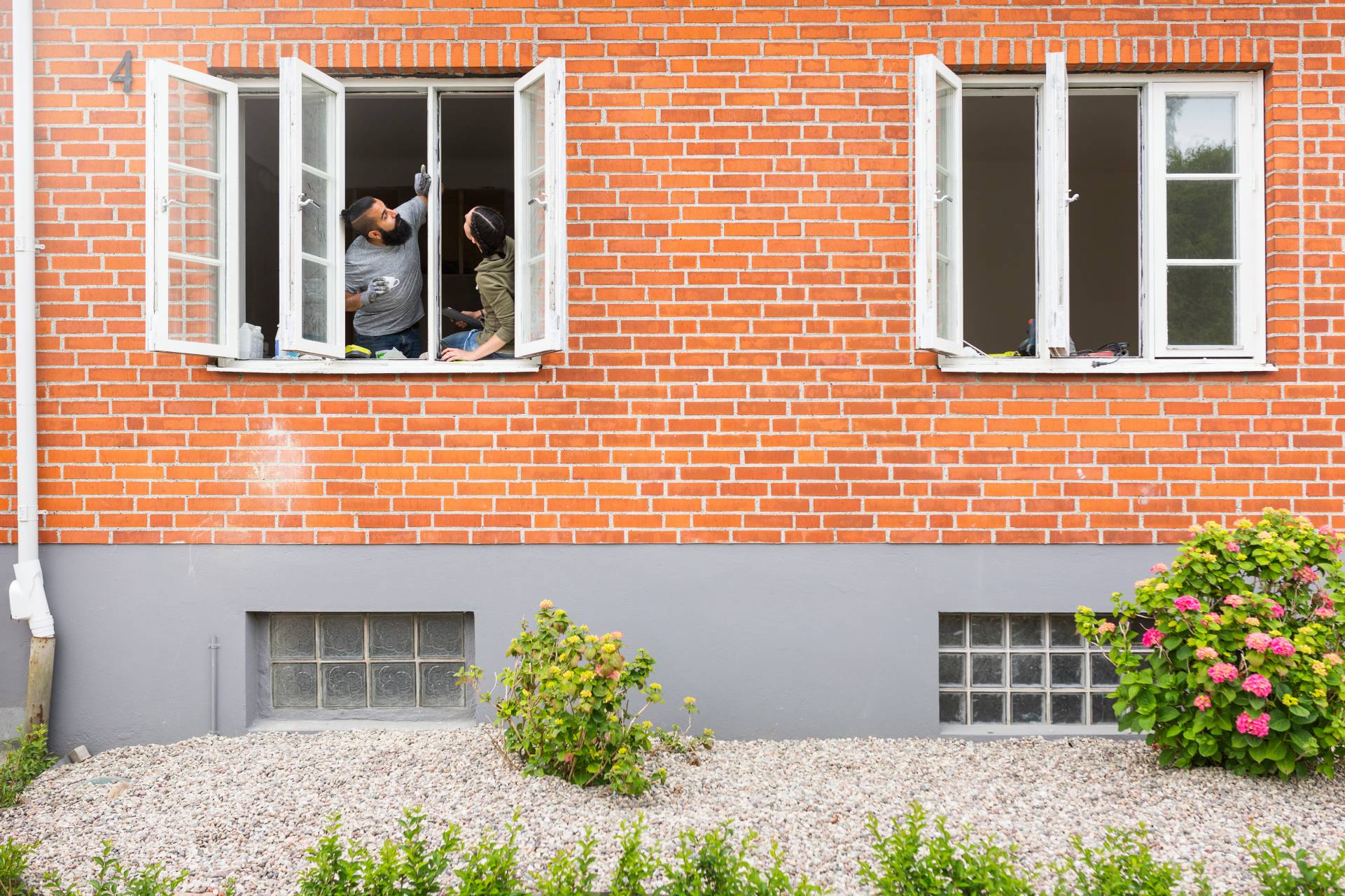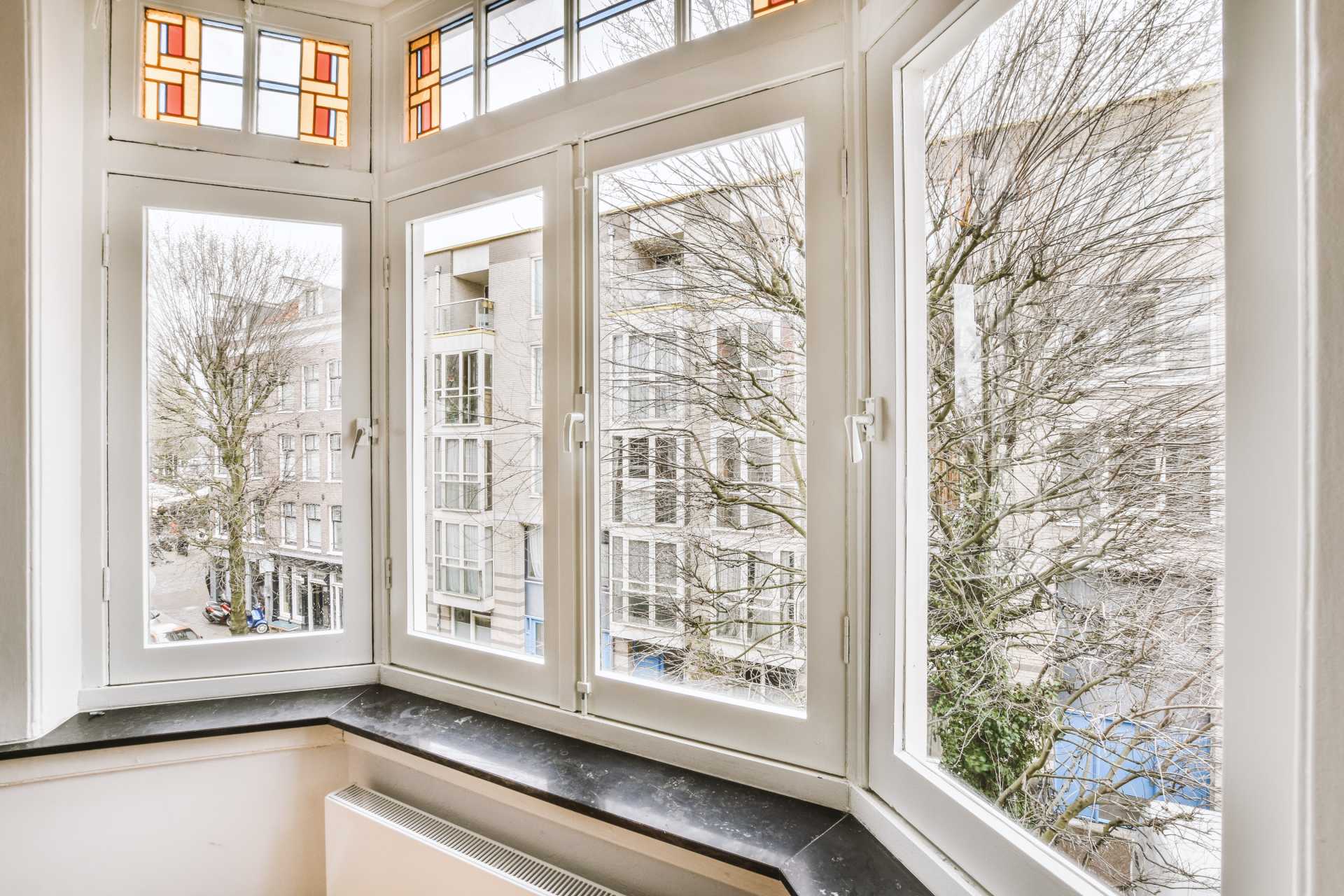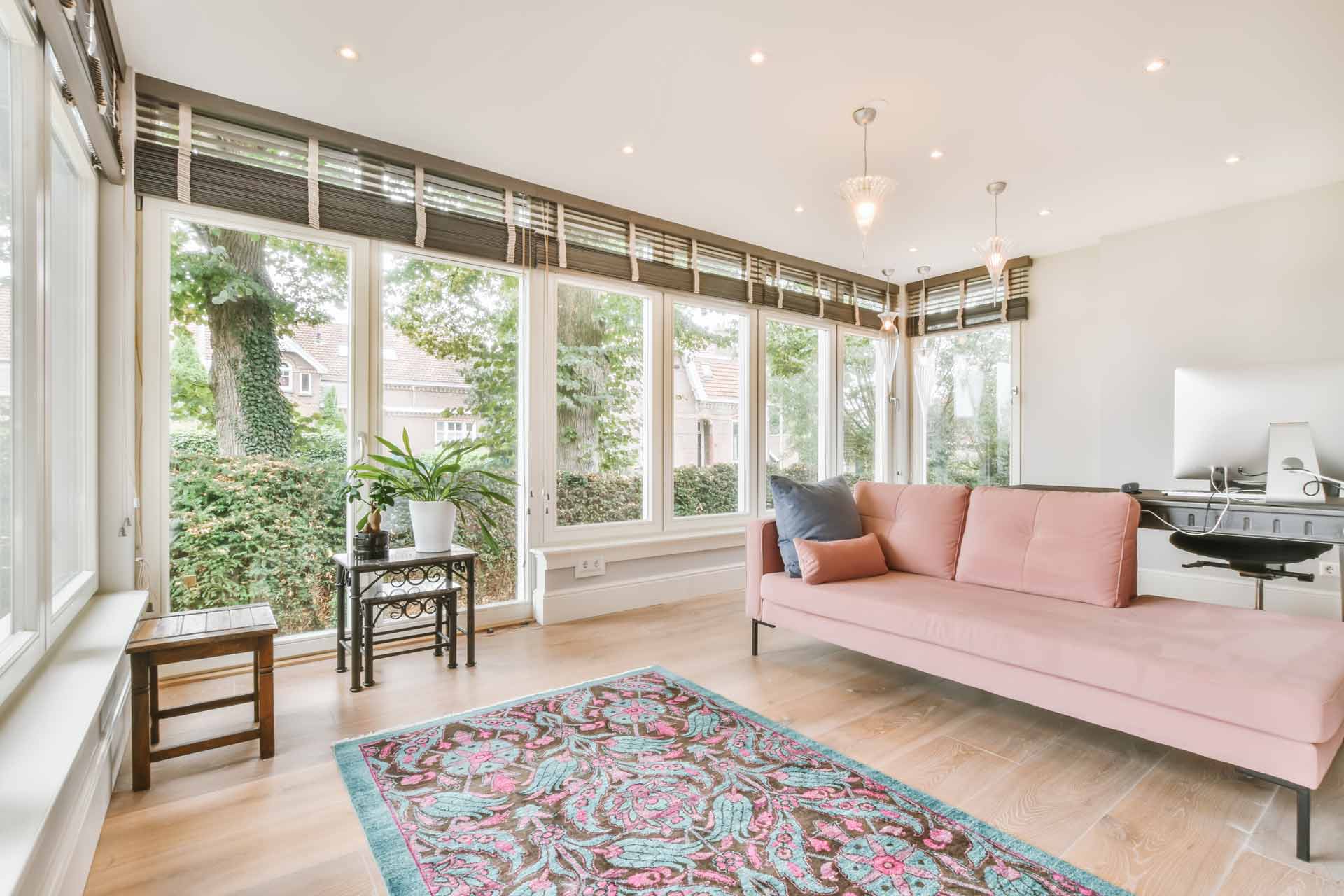Understanding Corrosion in Windows and Doors: Causes and Effects
Windows and doors are fundamental to the structural integrity and aesthetics of any home. However, they are also susceptible to corrosion, a process that can severely undermine their functionality and appearance. By understanding the causes and effects of corrosion, homeowners can take steps to protect and maintain the longevity and performance of these essential components.
What is Corrosion?
Definition and Basic Explanation
Corrosion is essentially the deterioration of materials through a chemical reaction with their environment. In the case of windows and doors, this often means the degradation of metal parts when exposed to moisture, air, or chemicals.
Types of Corrosion
There are several types of corrosion that can affect windows and doors:
- Galvanic Corrosion: Occurs when two different metals are in contact in the presence of an electrolyte, leading to one metal corroding faster than the other.
- Crevice Corrosion: Develops in confined spaces where a limited amount of the corrosive fluid can enter.
- Pitting Corrosion: Results in small, deep pits on the metal surface, highly damaging and difficult to detect early.
- Uniform Corrosion: Spreads evenly across the surface, often easier to detect and manage.
Causes of Corrosion in Windows and Doors
Environmental Factors
- Moisture and Humidity: These are among the most common catalysts for corrosion, particularly for metal frames and hardware. Moisture can seep into even small imperfections and initiate the corrosion process.
- Salt and Chemical Exposure: Homes near the ocean or in industrial areas might see accelerated corrosion due to exposure to salt and harsh chemicals, which speed up the metal degradation process.
- Temperature Fluctuations: Frequent changes in temperature can cause materials to expand and contract, which may crack the paint or coatings meant to protect from corrosion.
Material Quality and Types
- Metal Types: Different metals have different susceptibilities to corrosion. For instance, iron is more prone to rusting, whereas aluminum may corrode but does not rust.
- Protective Coatings and Their Failures: Protective coatings like paint and galvanizing are critical in preventing corrosion. However, if these coatings are applied incorrectly or become damaged, the protected metal can begin to corrode.
Improper Installation and Maintenance
- Lack of Proper Seals: Improperly installed windows and doors might lack adequate sealing, allowing moisture to penetrate and cause corrosion.
- Neglecting Regular Maintenance: Failing to perform regular maintenance can leave windows and doors vulnerable to corrosion. Regular inspections and timely repairs are crucial to prevent long-term damage.
Effects of Corrosion on Windows and Doors
Structural Integrity
- Weakening of Materials: As corrosion progresses, it can significantly weaken the metals used in windows and doors, compromising their structural integrity.
- Risk of Breakage and Collapse: In severe cases, corroded frames may fail, leading to the breakage of glass or complete collapse of the structure.
Functional Impairments
- Difficulty in Operation: Corroded tracks or hinges can make windows and doors tough to open and close, hampering their functionality.
- Seal Failure: Corrosion can also damage the seals, leading to drafts and energy inefficiencies.
Aesthetic Damage
- Visual Deterioration: Corrosion typically leads to unsightly stains, flaking, and discoloration, which can degrade the appearance of a property.
- Decreased Property Value: Visible corrosion can adversely affect property value, making it difficult to attract buyers or renters.
Preventative Measures and Treatments
Choice of Materials
Using corrosion-resistant materials like treated wood, vinyl, fibreglass, or stainless steel can be more effective, especially in high-risk areas.
Protective Coatings and Treatments
Regular application of protective paints and using anodic protection where necessary can shield metal components from the onset of corrosion.
Environmental Controls
Employing dehumidifiers and ensuring good ventilation can help in keeping the areas around windows and doors dry, significantly reducing the risk of corrosion.
Regular Inspections and Maintenance
Establishing a routine for regular checks and maintenance ensures early detection and remediation of potential corrosion issues, thus prolonging the life and functionality of windows and doors.
Safeguarding Your Windows and Doors Against Corrosion
Corrosion in windows and doors is not just a cosmetic issue—it can lead to serious structural and functional problems. Understanding its causes and effects helps homeowners recognize early signs and take preventive measures. With proper materials, regular maintenance, and timely interventions, the life span of windows and doors can be significantly extended, ensuring they remain functional and attractive for many years.
How Weather Stripping Can Improve Your Windows and Doors' Efficiency
Weatherstripping is a material used to seal gaps and cracks around windows and doors. It is typically made of flexible materials, such as rubber, foam, or vinyl, and is installed along the edges of windows and doors. It creates a tight barrier against the elements, maintaining a comfortable indoor environment, protecting against moisture infiltration and moisture damage, and reducing heating and cooling costs. Here’s how weatherstripping can help improve the efficiency of windows and doors at home:
Reducing Air Leaks
Over time, windows and doors can develop gaps and cracks around their frames, allowing air to leak in and out of the house. Air leaks are a significant source of energy loss in buildings, as heated or cooled air can escape through these openings. Many weatherstripping materials are designed to be compressed when the window or door is closed. When installed, they conform to the irregularities of the surfaces they are sealing against, effectively filling gaps and creating a tight seal. By sealing gaps and reducing air leaks, weatherstripping improves the overall energy efficiency of windows and doors. Less air leakage means that your home’s heating and cooling systems don’t have to work as hard to maintain a comfortable indoor temperature, leading to lower energy consumption and reduced utility bills.
Minimizing Drafts
Drafts not only make occupants uncomfortable but also contribute to energy loss by allowing air conditioned air to escape and outside air to infiltrate the building. Many types of weatherstripping are designed to compress when the window or door is closed, creating a snug fit. This reduces the size of any gaps and prevents air from flowing freely through them. By sealing gaps and cracks, weatherstripping blocks the pathways through which drafts would otherwise enter or exit the building. This helps maintain a more stable indoor temperature and prevents cold drafts from chilling occupants during the winter or warm drafts from causing discomfort in the summer, leading to a more enjoyable living space.
Preventing Moisture Infiltration
Moisture infiltration can lead to water damage, mold growth, and structural problems at home. It can also affect the energy efficiency of windows and doors. When water enters through gaps or cracks, it can compromise the effectiveness of insulation and contribute to heat loss or gain, depending on the weather conditions. Many types of weatherstripping are designed to be water-resistant or waterproof, meaning that they can withstand exposure to rain, snow, and other forms of moisture without deteriorating or allowing water to pass through. By effectively sealing gaps and preventing water from entering, weatherstripping helps protect windows, doors, and the surrounding structures from these issues, prolonging their lifespan and reducing the need for repairs and replacements.
Enhancing Insulation
Gaps and cracks around windows and doors can allow heat to transfer between the interior and exterior of the building. During the winter, heated air can escape through these openings, leading to energy loss and increased heating costs. Similarly, during the summer, hot outdoor air can infiltrate the building, forcing the cooling systems to work harder to maintain a comfortable indoor temperature. Weatherstripping creates a barrier against heat transfer, reducing the flow of air between the inside and outside of the building. Enhanced insulation with weatherstripping reduces the workload on heating and cooling systems by minimizing heat transfer through windows and doors. This leads to lower energy consumption, reduced utility bills, and improved overall energy efficiency at home.
Increasing Lifespan
Over time, air infiltration and moisture can cause windows and doors to deteriorate, leading to issues like drafts, leaks, and operational problems. Damage or deterioration, such as rot, corrosion, or warping, on windows and doors can compromise energy efficiency by allowing air leaks and heat transfer. Weatherstripping helps reinforce the structural integrity of windows and doors by sealing gaps and cracks and protecting them from environmental damage. This improves their durability and resistance to wear and tear. By protecting windows and doors from deterioration, weatherstripping helps maintain their efficiency, durability, and energy performance over time.
Overall, weatherstripping plays a crucial role in improving energy efficiency, maintaining indoor comfort and protecting your home from the elements. If you are looking to improve the energy efficiency of your home, consulting with a window professional can help you evaluate the energy performance of your windows, recommend upgrades or weatherproofing techniques, and provide advice on maximizing energy savings.
Bay vs. Bow Windows: Unraveling the Distinct Differences
When it comes to improving the look and functionality of your home, one key aspect to consider is your choice of windows and doors. In this blog post, we'll dive into the comparison between two popular window styles: bay and bow windows. No frills, just the facts to help you make an informed decision.
Architectural Differences
Bay windows exhibit a distinctive three-part structure, with the central window typically being larger and fixed. Flanked by two smaller operable windows, they project outward from the wall, creating an eye-catching external focal point. These windows are known for adding depth and dimension to the exterior of your home, creating charming nooks on the interior and framing specific aspects of your surroundings.
Bow windows, in contrast, introduce a soft, graceful curve. They feature multiple evenly spaced window panels that form a gentle arch. This curved design deviates from the angular lines of bay windows, lending a more fluid and harmonious look to your home's exterior. The absence of sharp angles contributes to a softer, more elegant aesthetic, making them a popular choice for those seeking a distinctive and eye-catching design.
Window Configuration
One key difference between bay and bow windows lies in the number of window panes. Bay windows typically consist of three to four panes, whereas bow windows feature a greater number, often five or more. This variance significantly affects the view, incoming light, and overall aesthetics of your space.
Bay windows, with their fewer panes, provide a segmented view, allowing you to frame specific elements of your surroundings. The larger central pane is typically fixed, ensuring an unobstructed view. The smaller operable side panes can be opened to allow fresh air and breeze into your room.
Conversely, bow windows, with their multiple panes, offer a broader and more open view of the outdoors. The additional window panels create a more extensive glass surface that bathes your interior in light and grants you a wider, panoramic perspective of your surroundings. This design is particularly appealing for those with beautiful natural surroundings or a desire to maximize the sense of space and connection to the outdoors.
Space and Interior Usage
Bay windows are particularly adept at creating intimate, cozy nooks within your home. These nooks can serve various purposes, whether it's a small library, a sunny corner for indoor plants, or a comfortable reading area. They carve out a space that's both functional and visually appealing. Bay windows have inspired homeowners to create charming spots for relaxation and creativity.
Bow windows, with their unique design, offer an entirely different interior experience. Their curvature allows for a more versatile and spacious interior. These windows create an open area that can be customized for various uses. Many homeowners choose to set up a charming dining nook within their bow window, taking full advantage of the panoramic view. Others use this space as a peaceful sanctuary for relaxation, adding comfy seating to enjoy the scenery. Bow windows provide a canvas for your creativity, allowing you to tailor the space to your specific needs and desires.
Exterior Appearance and Curb Appeal
The aesthetic enhancements each window type offers extend beyond the interior. Bay windows add a touch of sophistication to the exterior of your home with their angular design. They become a focal point that immediately catches the eye, enhancing the curb appeal of your property.
Bow windows, with their soft, curved lines, offer a different kind of curb appeal. The gentle arch adds a unique charm to your home's exterior, creating a harmonious and elegant look that can significantly boost your home's visual appeal.
Energy Efficiency
For the practical homeowner, energy efficiency is a crucial consideration. Both bay and bow windows have their strengths in this regard. Proper installation is essential to ensure the energy efficiency of these windows. A professional installation can help optimize insulation, sealing, and ventilation for both window types, allowing you to maintain a comfortable and energy-efficient home.
Cost and Installation
When it comes to the financial aspect, it's worth mentioning that bow windows tend to be a bit more expensive. This is primarily because of their curved design and the inclusion of more window panels. However, the actual expenses can fluctuate based on your specific needs and the choice of materials. It's crucial to weigh not only the initial purchase cost but also the long-term value and advantages of your investment.
Maintenance and Durability
As for maintenance and durability, the two window styles differ slightly in their requirements. Bay windows, with their straightforward design, generally demand less maintenance. Routine cleaning and upkeep will typically suffice to keep them in excellent condition. In contrast, bow windows, with their curved structure, may necessitate a tad more attention to ensure they remain in top-notch condition. The curved glass and framework might require additional care to prevent potential issues over time.
As for durability, both bay and bow windows are built to last. They are typically constructed from high-quality materials, such as wood, vinyl, or aluminum, which can withstand the test of time.
Choosing the Right Window for Your Home
When it comes to choosing between bay and bow windows, it's crucial to take into account your home's architectural design, the available space, and your personal preferences. Don't rush this decision; give it the time it deserves. Seeking advice from experts is a wise move to ensure that you make the best choice for your home. In the end, the decision between bay and bow windows boils down to how closely they match your unique requirements, style, and the overall visual appeal you aspire to create within your home.
Conclusion
In summary, bay and bow windows offer distinct advantages, from architectural aesthetics to interior functionality. Whether you opt for the angular elegance of bay windows or the sweeping charm of bow windows, your choice should align with your personal taste and your home's unique characteristics. So, go ahead and upgrade your home's appearance and functionality with the perfect windows and doors – the difference will be crystal clear.
How Windows Can Impact Your Family’s Health (and Your Well-being)
Windows and doors are crucial components of every home because they provide natural light, ventilation, and security. But did you know that they could also have a huge influence on the health and well-being of your family? Let us take a look at how windows and doors can improve indoor air quality, temperature management, natural soundproofing, and safety features, all of which can help you and your family live in a healthier and more pleasant home.
Improve overall indoor air quality
Installing new, well-sealed windows and doors can directly enhance the quality of the air within your home dramatically. Pollutants, allergens, and outside air contaminants can enter your home through poorly insulated or drafty windows, significantly impacting indoor air quality and causing a variety of respiratory disorders such as allergies, asthma, and other health difficulties. Properly sealed windows, on the other hand, may form a barrier between the internal and outside environments, preventing harmful toxins from getting into the home. This is especially crucial for persons who suffer from the mentioned respiratory issues. There are a number of features in windows that can better equip them at promoting better indoor air quality. Such features can include weatherstripping, multiple panes, and insulated frames. Combining these elements you are sure to guarantee the best indoor air quality in your home. Furthermore, well-sealed windows and doors can assist to manage humidity levels within your home, further supporting excellent indoor air quality. As it prevents the growth of mold and other hazardous germs, which can have a negative influence on your health and well-being.
Added sun exposure with just the right amount
Windows are critical in providing a comfortable and healthy living environment. They can manage internal temperature and contribute to energy savings in addition to providing natural light and ventilation. Therefore, it is essential to find a balance between the benefits of sunlight exposure and the risks. One of the most significant advantages of getting sunlight through windows is that it promotes vitamin D synthesis. This vital vitamin is necessary for strong bones and teeth, improved calcium absorption, and immune system support. Furthermore, natural light has been shown to improve mood and productivity, reduce stress, and improve cognitive performance, all of which contribute to overall well-being. To maximize the advantages of sunshine exposure while reducing the hazards, it is essential to choose windows that provide UV protection. One approach is to install low-emissivity (low-e) windows. These coatings can block a large amount of UV radiation while allowing natural light to get through. Low-e windows can also save energy by preventing heat from escaping in the winter and reflecting it in the summer, which leads to better interior comfort.
Control and maintain the indoor temperature
One of the most essential advantages of having high-quality windows and doors in your home is temperature regulation. The correct windows can help keep your home cool in the summer and warm in the winter, creating a comfortable and healthy living environment. Windows can assist keep your home cool in the summer by screening off the sun's heat and preventing it from entering your living area. With the appropriate windows, you can keep your home cooler without using air conditioning, saving money on energy costs and lowering your carbon impact. Furthermore, as mentioned, special coatings or films on windows can help block out dangerous UV rays, protecting your family and possessions from sun damage.
Windows play an important part in keeping your home warm and inviting throughout the winter months. High-quality windows and doors can trap heat inside your home, keeping it from leaving and keeping you warm even on the coldest days. With appropriate sealing and insulation you will not have to worry about your indoor climate from being disturbed by the outdoor temperatures for a relaxing and cozy home. In addition temperature-regulating windows are that they can assist keep your home at a constant temperature. You can minimize unwanted temperature variations and guarantee that every area in your house is a comfortable place to be with the correct windows and doors.
Limit noise pollution
Noise pollution could have a negative influence on our health and well-being, especially while we sleep. Excessive noise at night can cause increased stress, poor sleep quality, and possibly long-term health concerns. This is why natural soundproofing, or using high-quality windows to limit outside noise, may be so advantageous. There are a few crucial elements to consider while selecting windows for soundproofing. First and foremost, the quality of the glass itself is critical. Double or triple-paned glass can provide superior insulation and noise reduction than single-paned glass. Also, the thickness of the glass can influence how much noise is blocked. The window frame is also significant since it might affect the overall soundproofing efficiency. Since they provide superior insulation and lower the amount of sound that can pass through the frame, vinyl or fiberglass frames are often better at suppressing noise than other materials. Overall, to achieve the maximum benefit, correct installation is critical for optimizing new window soundproofing effects.
Added safety with high-quality windows and doors
Windows' safety features could additionally have an influence on your family's health and well-being. Windows that are not securely fastened can pose a considerable safety risk in homes with young children or pets. Accidents can happen when children or dogs push their way through an open or unlocked window, resulting in falls or other accidents. It is essential to select windows with sufficient safety measures to ensure the safety of your family. Windows with childproof locks or mechanisms, for example, can keep small children from mistakenly opening windows and slipping out. Moreover, tempered or laminated glass windows can lessen the danger of damage if the glass breaks. Another essential safety factor for windows is their resistance to forced entry. Homes with easy access from the outside are more vulnerable to burglary and other crimes. You can make your home safer and protect your family from possible invaders by investing in windows with reinforced frames and shatter-resistant glass.
As previously said, windows and doors play an important part in providing a safe and comfortable living environment for your family. You can enhance indoor air quality, manage temperature, minimize outside noise pollution, and avoid accidents by investing in high-quality windows and doors with suitable safety measures, insulation, and natural soundproofing. Which is why, if you want to improve your family's health and well-being, think about the influence of your windows and doors and implement the necessary improvements to create a happier, healthier home.
Selling Your Home? Choose the Finest Windows Style to Boost Curb Appeal
When it comes to selling your home, first impressions are everything. The way your home looks on the exterior can be the deciding moment where potential buyers will decide whether or not they want to continue inside. One way to boost curb appeal and make a great impression on potential buyers is by choosing the right style of windows and doors for your home. The right windows can not only enhance the overall aesthetic of your home, but they can also increase energy efficiency, and possibly increase the value of your home.
Create extended views with bay windows
One popular window style that can add a touch of elegance to your home is bay windows. Bay windows are comprised of three windows that project out from the wall, creating a small nook inside the home. This unique design feature can add a touch of elegance and architectural interest to a home's exterior, making it stand out from other homes on the market. Not to mention additional surface space for decorations or small storage. Bay windows are also a great source of natural light. The three windows that make up a bay window allow for ample light to enter the home, making the interior feel brighter and more inviting. This can be especially appealing to potential buyers who are looking for a home with a lot of natural light. In addition, bay windows can provide a great view of the outdoors, which can be a desirable feature for many buyers. Bay windows can be placed in strategic areas of the home, such as a living room or bedroom, to provide a picturesque view of the surrounding landscape.
Function meets aesthetic with awning windows
Awning windows have a variety of functionalities. Awnings may be used to decorate windows in the same way as curtains can on the interior of a home. They, together with shutters, add character to what would otherwise be a plain outside wall. Additionally, awnings can be used to complement or contrast the color of your home's siding, brick, stone, painted wood, or other exterior materials. You may want to match your awnings to the trim or roof color rather than the outer wall color. But the point is that because they come in such a wide range of designs, they may be incorporated into your existing aesthetic, making awning windows desirable. Speaking about the design of awning windows, whether domed, concave, rounded entry canopy, or triangular fixed frame, it can instantly draw one's attention by its mere shape.
Modernize the exterior with casement windows
Well known for adding a contemporary and modern touch to your home, casement windows are a great option for boosting your property’s curb appeal. They have a simple and clean aesthetic, with a single sash that opens outward on a hinge. This style enables some of the most natural light into the space, making it feel brighter and more expansive. Furthermore, casement windows are simple to operate and provide good ventilation, which is especially useful in hotter regions. They can also be painted or stained to match the color of the home, allowing them to fit in with the architecture. Overall, casement windows are a practical and appealing option for homeowners wishing to improve their home's exterior appeal.
Timeless and trendy double-hung windows
Another trending and popular window style known for boosting a home’s curb appeal is double-hung windows. Due to their timeless and classic design, they boast a traditional look that can complement a wide variety of architectural styles, from Victorian to Colonial to modern. The functional design features two sashes, one on top and one on the bottom that allows them to be opened independently, allowing for both an abundance of natural light and ventilation. The design also allows for easy cleaning as both sashes can tilt in for easy access to the outside surface. Another advantage of double-hung windows is that they are highly customizable. They can be made from a variety of materials, such as wood, vinyl, or fiberglass, which can provide a unique and elegant look. In addition to the overall appeal, double-hung windows can include energy-efficient options like double or triple-pane glass, low-E coatings, and argon gas between the panes that can help to reduce energy costs and improve the home's overall efficiency.
Extend your home with patio window doors
Patio doors are a prevalent window style for boosting the curb appeal of a home because of their ability to seamlessly blend indoor and outdoor living spaces. They provide a large opening for natural light to enter the home and allow for easy access to the backyard or patio area. This can create a feeling of spaciousness and can make the home feel more connected to the outdoor environment. Additionally, patio doors come in a variety of styles, such as sliding, French, and bi-fold, allowing homeowners to choose a design that complements their home's aesthetic.
Another benefit of patio doors is that they can be made of different materials such as wood, vinyl, or aluminum, which can provide a unique and elegant look. Some styles like French patio doors can be custom-made to fit any size opening and stained or painted to match the home's color, making them blend seamlessly into the architecture. Overall, patio doors are a practical and attractive choice for homeowners looking to enhance the curb appeal of their homes while also expanding the living space.
When selling a home, the right windows and doors can make a big difference in terms of curb appeal. Casement windows, patio doors, and double-hung windows are all great options for boosting a home's look. Casement windows offer a sleek, modern look with maximum natural light, patio doors seamlessly blend indoor and outdoor living spaces, and double-hung windows offer a timeless, classic style that complements a wide variety of architectures. These window styles are known for their durability, functionality, and energy efficiency which can help to increase the value of the home. Choosing the right window style can make a big impact on the overall look and feel of a home and can be a key factor in attracting potential buyers. Lastly, for the perfect installation always choose a reputable and experienced professional as the look and function of a window are maximized when they are installed correctly.
Why Use Double Hung Windows?
A double-hung window is a stylish alternative to the single hung window. They come in a wide variety of styles and framing options. This traditional window style features an upper and lower sash that slide vertically past one another in a single casement. Double-hung windows are often placed adjacent to decks, patios, and walkways. So, why should you use double-hung windows? What are the advantages of double-hung windows? Here are 5 pros of double-hung windows in your home as a window replacement:
 1. Save on Energy Costs
1. Save on Energy Costs
If you’re looking to save on energy costs, invest in high-quality double-hung windows. Did you know that most homeowners receive up to 50% energy savings? You can increase insulation with triple weather seals and “XL Warm Edge” spacer technology.
2. Improved Ventilation
Double-hung windows offer improved ventilation capabilities and the ability to control airflow. If you want maximum ventilation, just open both top and bottom sashes. The top sash will allow warm indoor air to be expelled through it and the bottom sash will let cool and fresh air into your home.
3. Optimal for Cleaning
Double-hung windows are designed to offer ease of maintenance. They have tilt-out sashes which make for a hassle-free window clean. You’re able to clean both the interior and exterior from inside your home. Some double-hung windows even have removable sashes too.
4. Versatility
Double-hung windows are popular for their class appeal, making them suitable for any home or room. They come in a variety of sizes, styles, and shapes, as well as a wide range of colour and materials. So regardless of your home’s style, whether traditional or contemporary, double-hung windows are going to fit right in.
5. Easy to Operate
Double-hung windows don’t crank out or project outwards. You can easily open the top and bottom sashes by sliding down from the top and up from the bottom. Their design is meant to eliminate the risk of accidents in high traffic areas such as decks, patios, and walkways.
How Do You Know If Your Window Needs Replacing?
Although the usual lifespan of windows is 20 years, you may need window replacement sooner than the expected lifetime of your windows due to certain critical factors. Several factors determine the durability of your windows, such as the materials used, quality of installation, and other factors within the home.
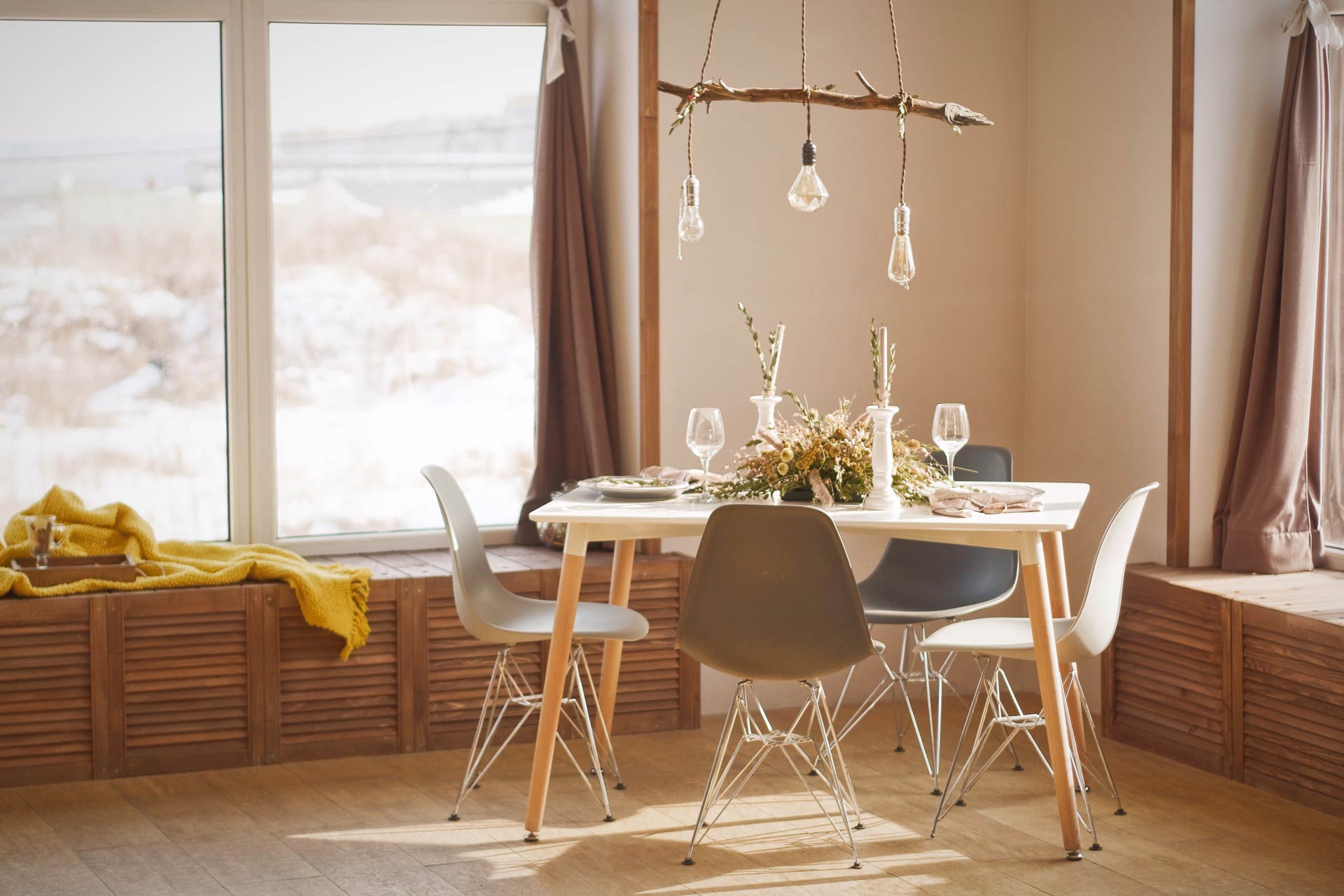 However, carrying out a window replacement project at the right time will help to prevent further inconvenience and resulting effects of worn windows. As a result, read the tips below to know if your windows need replacing.
However, carrying out a window replacement project at the right time will help to prevent further inconvenience and resulting effects of worn windows. As a result, read the tips below to know if your windows need replacing.
1. Drafts
If your windows allow drafts into your house and you feel the outdoor temperature filtering with your home, you need window replacement. Your windows are not functioning appropriately again. If your windows have single-pane glass, you can upgrade them to double glazing to keep drafts out. Note that having drafts and cold air in your home could be that the window seal or caulking has been removed. Thus, replace the windows as soon as possible.
2. Visible Damage
Your windows are exposed to the harsh elements and frequent operation, which make them subject to damage. Little wear and tear may have accumulated and resulted in significant damage that causes your windows to underperform. With visible signs such as rotting frames, removed or cracked caulking, gaps in the windows broken glass, and removed sashes, among others, you unavoidably need window replacement.
3. Condensation
If your windows are double glazing and have condensation inside the panes, which makes the windows look foggy, you need to replace the windows. The implication is that your windows have failed and will not keep your home as warm as expected. This will also affect the energy efficiency of your home if left not replaced.
4. Faded Carpet, Curtains and Furniture
If some parts of your curtains, carpet, and furniture, that are close to the windows appear more faded than the rest, the chances are that your windows have failed and allowed the harmful UV-rays into your house. Do not think twice; call a professional contractor for window replacement to protect your properties from the damaging ultraviolet rays.
5. Difficult Windows Operations
When your windows can no longer open or close without giving a struggle as if you are fighting, you undoubtedly have to replace them. You should not have to engage in a fitness test when opening or closing your windows.
The above are signs that your windows need replacing. Take advantage of high-quality and modern designs of windows on the market for your window replacement project.
How Can I Improve My Home Heating Efficiency?
Are you suspecting the loss of heat in your home? Is your home affected by drafts, which makes it inefficient? Do you wish to improve your home heating efficiency? Do not search any further; read the tips below for ways to improve the heating efficiency of your home.
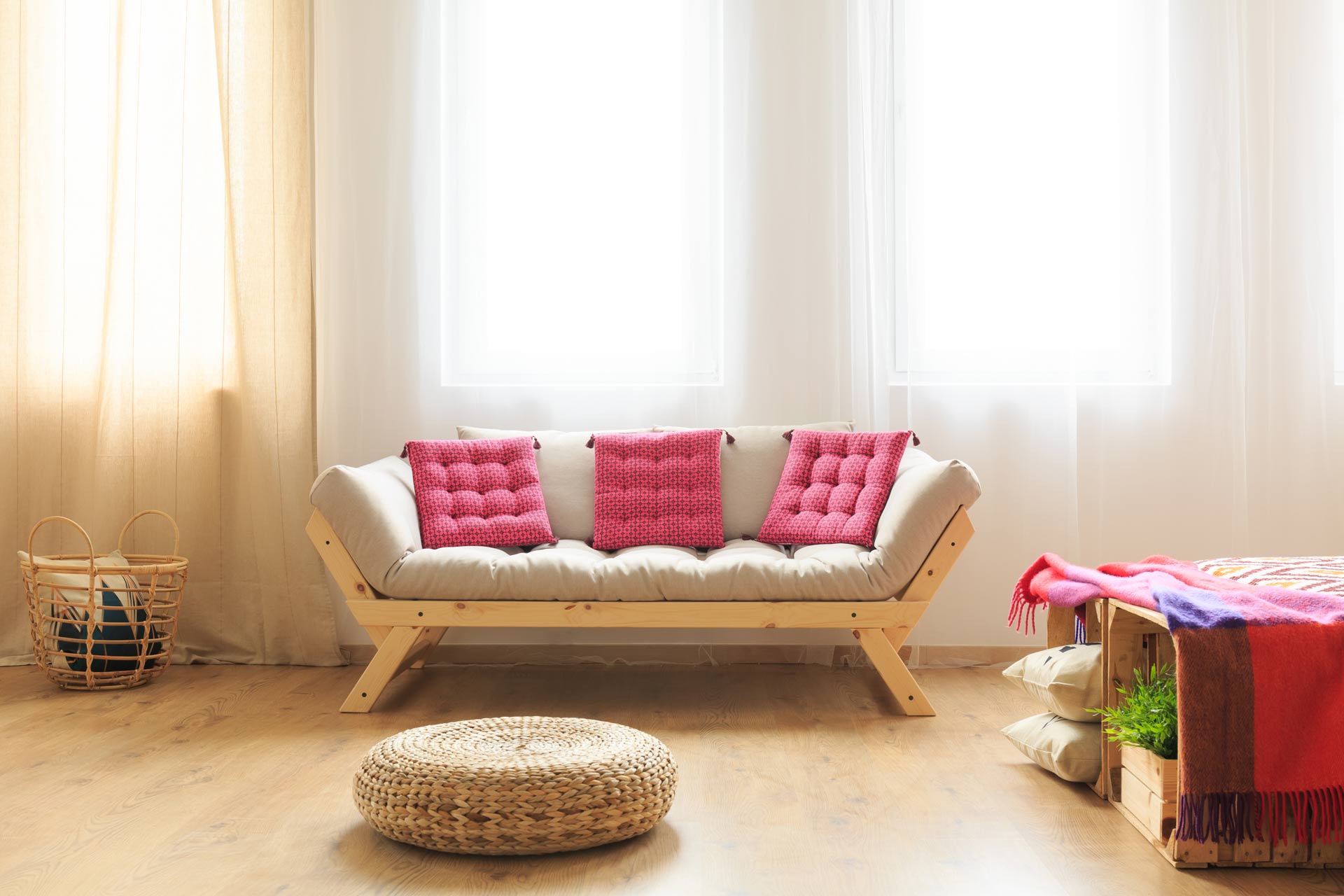 1. Loft Insulation
1. Loft Insulation
Insulating your loft or attic area is one of the best ways to enhance the heating efficiency of your home. Usually, most of the home’s heat or cold is lost through the attic area. To curtail this loss, hire a contractor to insulate your home’s loft correctly. This will reduce the rate of heat loss via the attic part of your home. So, your home will retain the heat generated by your heater.
2. Window Replacement
It is also discovered that heat is lost through the windows. When your windows have become worn, damaged, or the seals have removed, your home will be losing the most of the generated heat through the windows. As a result, call for window replacement as fast as possible to prevent further heat loss in your home.
Although you may enhance the heating efficiency of your home by insulating your windows, caulking or sealing the frames, or blocking the gaps in the window, window replacement is the easiest way to tackle the issue effectively.
3. Hang Thick Draperies and Curtains
Hanging thick curtains or draperies in your home is one of the simplest and effective ways to improve the heating efficiency of your home. The heaviness or thickness of the curtains will prevent heat from escaping from the home’s interior. Pending the time you go for window replacement, hang thick curtains, and improve your convenience within the house.
4. Service Your HVAC Unit
To improve the heating efficiency of your home, you need to ensure that your heater is functioning optimally and that the bulk of the generated heat gets to the house. A well-maintained heater will work optimally and let in the most heat produced.
5. Insulate Your Doors
Your doors may be another source of heat loss in your home. And due to the exposure to the elements, its insulation may have been lost. However, you can block gaps or holes on your door, install new weather stripping, and caulk gaps on the door frames to increase the heating efficiency of your house.
Go over the tips above to improve the heating efficiency of your home. You can start with window replacement. Following the tips above will help you to avoid paying high energy bills without commensurate benefits from your heater.


